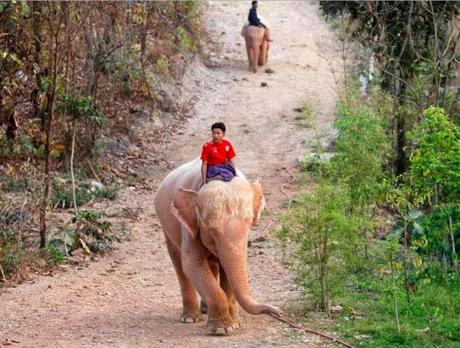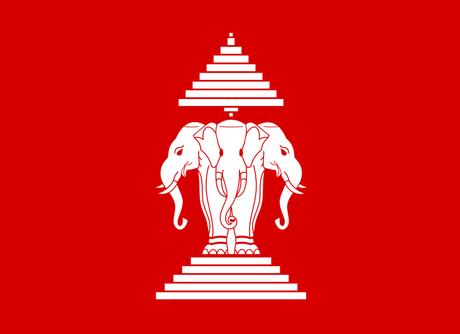 A rare white
elephant has been captured in Myanmar, state media said recently – the creature
traditionally seen as a sign of political good fortune in a country edging
towards breakthrough national elections. The pink-tinged pachyderm, which was
caught in a forest reserve in the Irrawaddy Delta area of Pathein, is the ninth
white elephant to be held in captivity in the former junta-run country,
according to a report in the Global New Light of Myanmar.
The female elephant
is thought to be about seven years old, is around 190cm tall and has “pearl
coloured eyes”. They have been found at opportune moments for the country,
which has been ruled by a quasi-civilian government since 2011. The discovery
of a white elephant just before elections in 2010 was hailed by state media as
the mark of a successful “democratic transition”, despite widespread criticism
of the polls with allegations of cheating and the absence of opposition leader
Aung San Suu Kyi. Myanmar is currently preparing for another general election,
a key test of the country’s political reforms and one that is likely to see
significant wins for Suu Kyi’s party. [source : www.scmp.com/news/asia/]
A rare white
elephant has been captured in Myanmar, state media said recently – the creature
traditionally seen as a sign of political good fortune in a country edging
towards breakthrough national elections. The pink-tinged pachyderm, which was
caught in a forest reserve in the Irrawaddy Delta area of Pathein, is the ninth
white elephant to be held in captivity in the former junta-run country,
according to a report in the Global New Light of Myanmar.
The female elephant
is thought to be about seven years old, is around 190cm tall and has “pearl
coloured eyes”. They have been found at opportune moments for the country,
which has been ruled by a quasi-civilian government since 2011. The discovery
of a white elephant just before elections in 2010 was hailed by state media as
the mark of a successful “democratic transition”, despite widespread criticism
of the polls with allegations of cheating and the absence of opposition leader
Aung San Suu Kyi. Myanmar is currently preparing for another general election,
a key test of the country’s political reforms and one that is likely to see
significant wins for Suu Kyi’s party. [source : www.scmp.com/news/asia/]
 From 1952 until
the fall of the royal government in 1975 the country of Laos had a red flag,
with a white three-headed elephant (the god Erawan) in the middle. On top of
the elephant is a nine-folded umbrella, while the elephant itself stands on a
five-level pedestal. The white elephant is a common royal symbol in Southeast
Asia, the three heads referred to the three former kingdoms Vientiane,
Luangprabang, and Champasak which made up the country. The nine-folded umbrella is also a royal
symbol, originating from Mount Meru in the Buddhist cosmology. The pedestal
represented the law on which the country rested.
With regards – S.
Sampathkumar
16th Mar
2015.
From 1952 until
the fall of the royal government in 1975 the country of Laos had a red flag,
with a white three-headed elephant (the god Erawan) in the middle. On top of
the elephant is a nine-folded umbrella, while the elephant itself stands on a
five-level pedestal. The white elephant is a common royal symbol in Southeast
Asia, the three heads referred to the three former kingdoms Vientiane,
Luangprabang, and Champasak which made up the country. The nine-folded umbrella is also a royal
symbol, originating from Mount Meru in the Buddhist cosmology. The pedestal
represented the law on which the country rested.
With regards – S.
Sampathkumar
16th Mar
2015.
Photo of Laos flag : "Flag of Laos (1952-1975)" by Thommy - Own work, based on Flags of the World - Laos, 1952-1975 and Coat of arms of Laos (1952-1975).svg. Licensed under Public Domain via Wikimedia Commons; Photo - of white elephant : the atlantic.com

